Masters in management data highlights gender pay gap
Roula Khalaf, Editor of the FT, selects her favourite stories in this weekly newsletter.
Delving into the data gathered for masters in management rankings over the past decade underscores the inequality in pay between male and female alumni three years after graduation — but it also highlights some surprises.
Other data show the most popular and lucrative careers for alumni and what happens to graduates’ incomes when they move abroad.
Three years after graduating with a masters in management, the median salary for men is higher than that for women in every sector of employment.

When the pay of men and women is compared by seniority, women are ahead only in mid-level management positions.
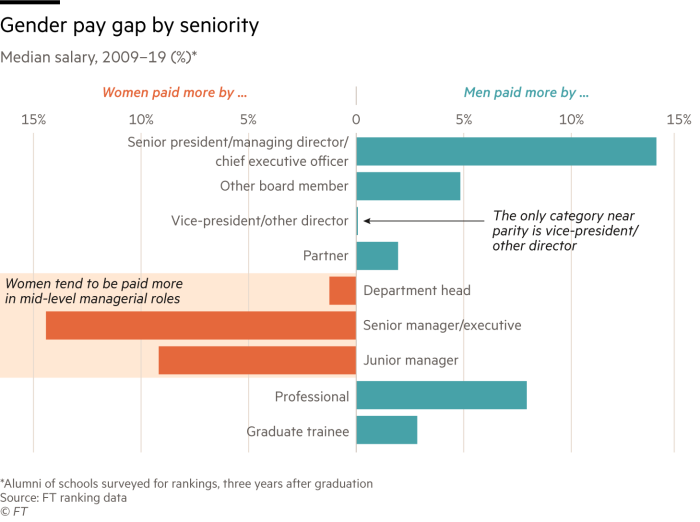
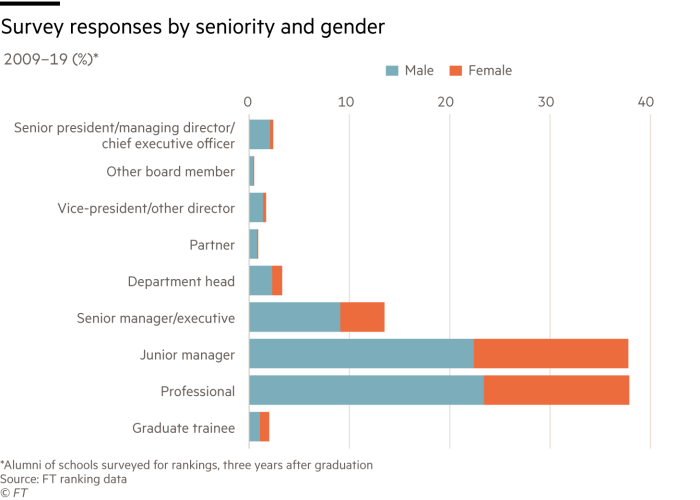
Finance/banking and consultancy have always been the top destinations for MiM graduates. Consultancy is growing in popularity, and finance/banking diminishing, but together they have quite consistently employed 45-50 per cent of alumni.
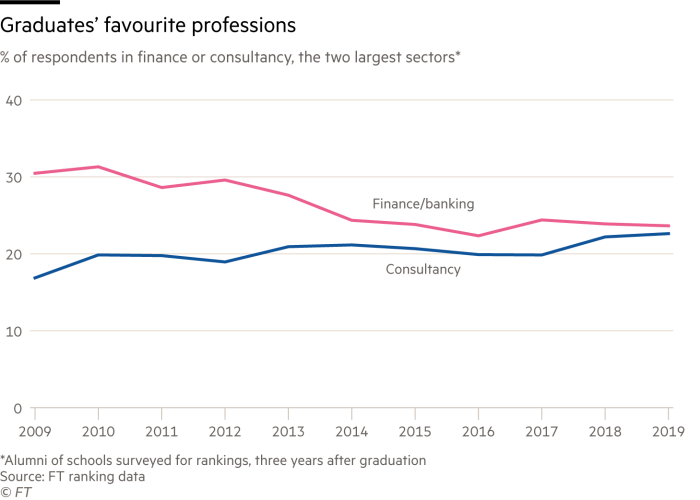
Law, finance/banking and consultancy are the sectors with the highest salaries. Overall, there was a dip in average salary for those who graduated in the period after the financial crisis (surveyed three years later), but the trend across the whole period is for increasing pay, even when adjusted for inflation.
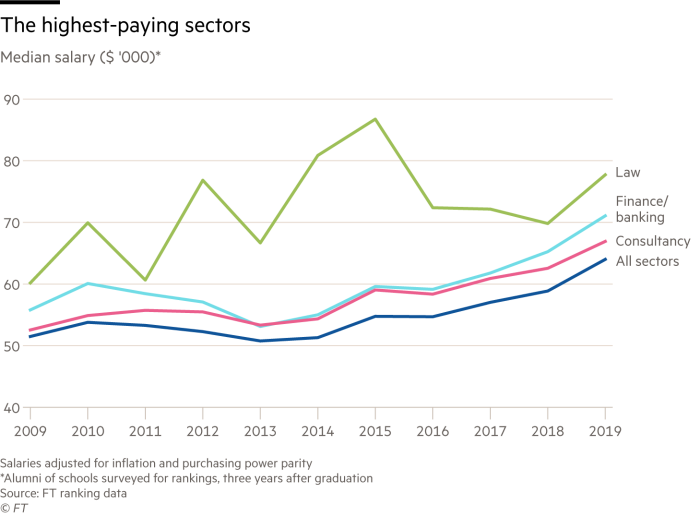
Most alumni who move to a country different to where they lived before and during their MiM see a rise in salary compared with others. The largest percentage increase in pay after moving is in healthcare (with a mean salary up 63 per cent). Law is the only sector where movers see a lower mean salary (down 19 per cent).
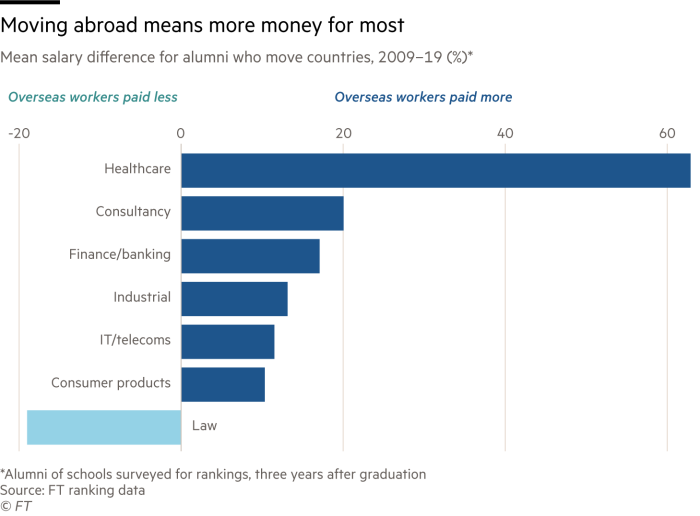
Comments